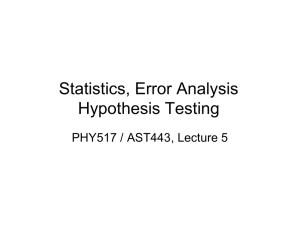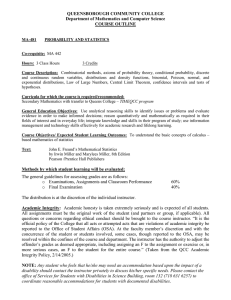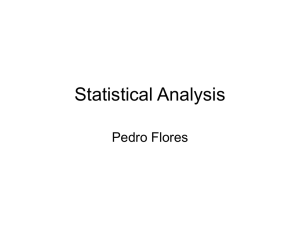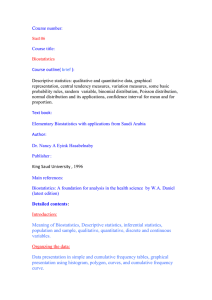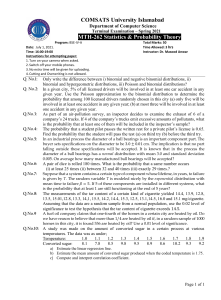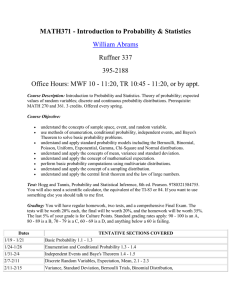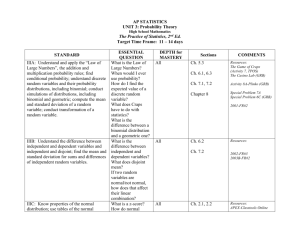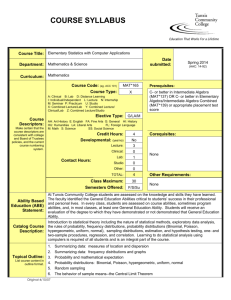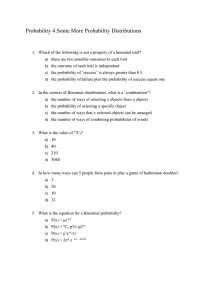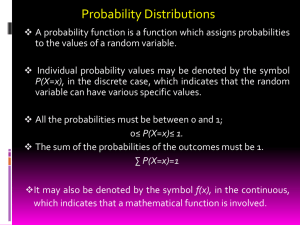Probability & Statistics Formula Review
advertisement
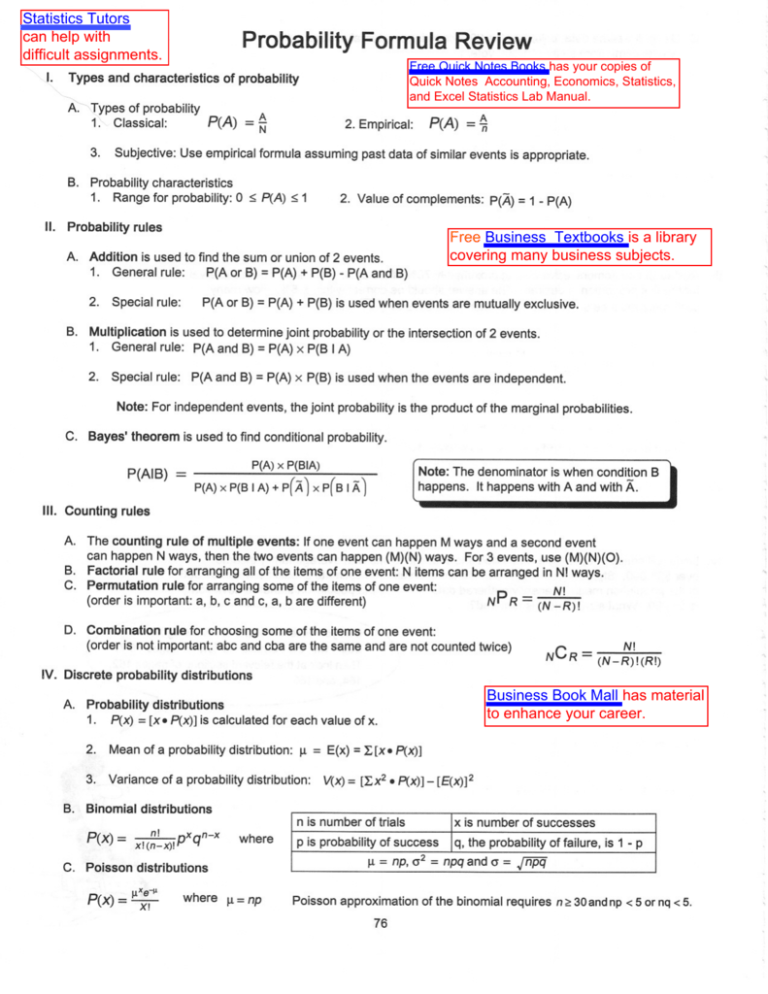
Statistics Tutors can help with difficult assignments. ~. Probability Formula Review Free Quick Notes Books has your copies of Quick Notes Accounting, Economics, Statistics, and Excel Statistics Lab Manual. Types and characteristics of probability ~A~ypes of probability 1:,- Classical: 3. A peA) = ~ 2. Empirical: peA) = N Subjective: Use empirical formula assuming past data of similar events is appropriate. B. Probability characteristics 1. Range for probability: a ~ PeA) ~ 1 2. Value of complements: P(A) = 1 - P(A) II. Probability rules Free Business Textbooks is a library covering many business subjects. A. Addition is used to find the sum or union of 2 events. 1. General rule: P(A or B) = P(A) + P(B) 2. Special rule: - P(A and B) P(A or B) = P(A) + P(B) is used when events are mutually exclusive. B. Multiplication is used to determine joint probability or the intersection of 2 events. 1. General rule: P(A and B) = P(A) x P(B I A) 2. Special rule: P(A and B) = P(A) x P(B) is used when the events are independent. Note: For independent events, the joint probability is the product of the marginal probabilities. C. Bayes' theorem is used to find conditional probability. P(AIB) P(A) x P(SIA) = Note: The denominator is when condition B happens. It happens with A and with A. P(A) x P(S I A) + p( A J x p( S I A J III. Countingrules A. The counting rule of multiple events: If one event can happen M ways and a second event can happen N ways, then the two events can happen (M)(N) ways. For 3 events, use (M)(N)(O). B. Factorial rule for arranging all of the items of one event: N items can be arranged in N! ways. C. Permutation rule for arranging some of the items of one event: N! P (order is important: a, b, c and c, a, b are different) N R = (N - R) ! D. Combination rule for choosing some of the items of one event: (order is not important:abc and cba are the same and are not counted twice) N! NCR = (N-R)!(R!) IV. Discrete probability distributions Business Book Mall has material to enhance your career. A. Probability distributions 1. P(x) = [X8 P(x)] is calculated for each value of x. 2. Mean of a probability distribution: Il = E(x) = L[X8 P(x)] 3. Variance of a probability distribution: V(x) = [LX2 8 P(x)] - [E(x)]2 B. Binomial distributions P(x ) = n! x! (n-x)! X n-x P q where = I1xe-11 X! where X is number of successes P is probability of success Iq, the probability Il = np, 0'2 = npq and 0' = C. Poisson distributions P(x) n is number of trials Il = np of failure, is 1 - P J npq Poisson approximation of the binomial requires n ~ 30 and np < 5 or nq < 5. 76 V. The continuous normal probability distribution A. To findthe probabilityof x being withina given range: X-f..L Z=cr- Normal approximation of the binomial requires n;;:: 30and both np and nq are;;::5. The continuity correction factor applies. B. To find a range for x given the probability: J..l::!:Z(J VI. Central limit theorem Excel Internet Library has learning materials classified by type of user. Sampling P(x) Distribution of the Means ~ MBA Internet Library will help with acceptance, graduation, and career advancement. Software Tutorial Internet Library has material to help with many popular software programs. x J..l J..lx If n;;:: 30, the population may be skewed. Free Non-business Textbooks Library covers many subjects. VII.Point estimates A. xfor f..l VIILlnterval estimates B. s for 0" c. p forp D. Sxforo"xwhere Sx=!n and o"x= In when n ;;::30 A. For a population mean 0- XIZJii Note: Use the finite correction factor in section VIII formulas 5 or XIZJii when n/N;?:.05. B. For a population proportion p - + z JP(1-P) ~ where p x =fj IX. Determining sample size A. When estimating the population mean n B. When estimating the population proportion = (z;)2 n=p(1-p>(~)2 77 N-1 J N-n Section VIII Note: Whenn < 30 and 0" is unknown, the t distribution, to be discussed in chapter 16, must be substituted for the z distribution when making interval estimates. Many statistics software programs do all interval calculations, regardless of sample size, using the t distribution.

